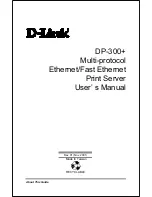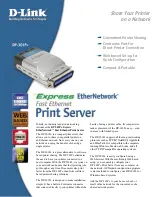
Operational Features
The following list summarizes some of the operational features of the printer:
Standalone operation—The printer is designed to operate in an unattended
office environment. It does not require a dedicated operator for normal printing
tasks.
Operator messages and actions— The printer has a 32-character display for
messages, operator instructions, setup options, and host-related status.
Beeper— A beeper can alert operators when the printer requires attention.
Problem indicators— LEDs on a printer icon at the left of the operator panel
indicate where a problem such as a paper jam occurs.
Paper jam auto-eject doors—After a paper jam, you can usually auto-
matically clear the jammed paper by opening one or two doors.
Traces—The printer can perform several kinds of traces, which record details
about printer activities and communications with the control unit and the
controlling computer system, to assist service personnel.
Print samples—Several print sample masters are stored in the printer control
memory. Key operators can print these print samples whenever necessary to
sample print quality and solve problems.
Authorization levels—You can have one or more persons designated as a
key operator. The key operator performs tasks such as configuring the printer,
cleaning the printer, adding new toner, and replacing supplies.
Password protection—You can specify that certain operator actions be
password-protected; in other words, only the person who knows the password
can perform certain key operator functions.
Toner cartridge—The printer monitors the toner supply and alerts the operator
when it should be replenished. In addition, automatic toner recycling reduces
the amount of toner the printer uses.
Error log—Sensors and other error-checking hardware detect status in the
printer. Information about errors is displayed to the operator and logged for
use in correcting problems.
Data Security
The printer has the following data security features:
You cannot read data from the printer back to the controlling computer system.
You cannot print data that remains in memory after a job is finished.
Images on the photoconductor are cleaned and erased after each print.
The control unit accepts commands from the host to erase all residual print
data and fonts from its memory.
Characters stored in memory cannot be easily interpreted because they are
translated into a form different from 8-bit EBCDIC characters.
If many of the printing applications for your company are confidential, consider
placing the printer in a controlled-access area.
4
InfoPrint 60 and 3160 Introduction and Planning Guide
Summary of Contents for 3160
Page 1: ...InfoPrint 60 3160 Advanced Function Printer IBM Introduction and Planning Guide G544 5242 03...
Page 2: ......
Page 3: ...InfoPrint 60 3160 Advanced Function Printer IBM Introduction and Planning Guide G544 5242 03...
Page 7: ...Acronyms and Abbreviations 79 Index 81 Contents v...
Page 10: ...viii InfoPrint 60 and 3160 Introduction and Planning Guide...
Page 36: ...22 InfoPrint 60 and 3160 Introduction and Planning Guide...
Page 52: ...38 InfoPrint 60 and 3160 Introduction and Planning Guide...
Page 82: ...68 InfoPrint 60 and 3160 Introduction and Planning Guide...
Page 94: ...80 InfoPrint 60 and 3160 Introduction and Planning Guide...
Page 98: ...84 InfoPrint 60 and 3160 Introduction and Planning Guide...
Page 101: ......
















































